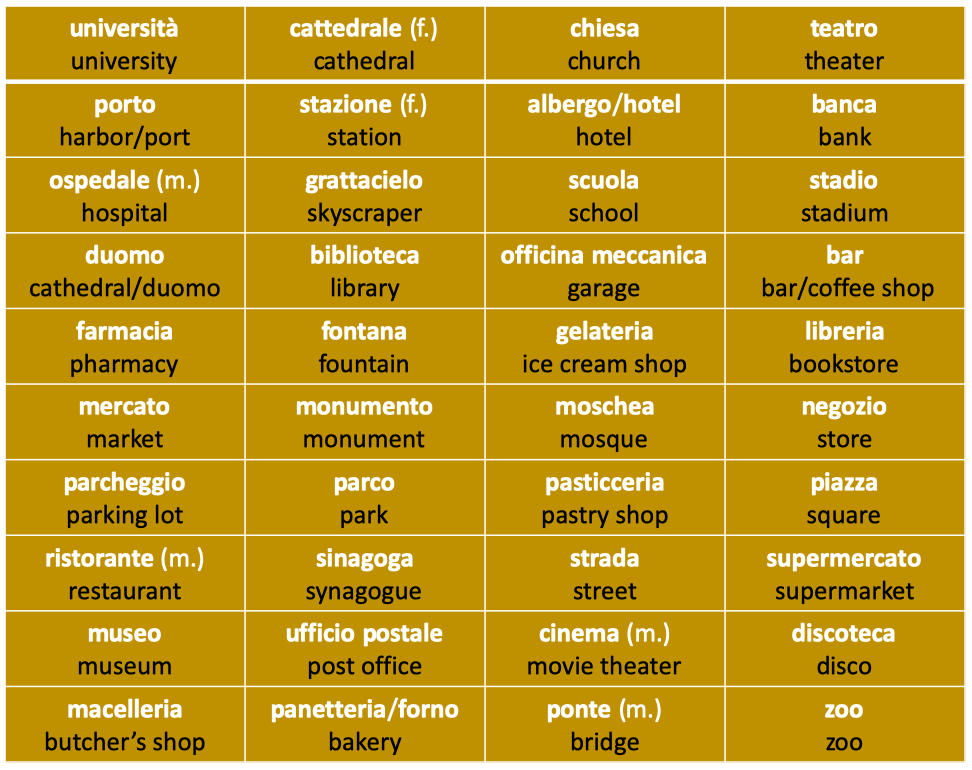There is, there are
| Listen to the audio file and find the corresponding images below.
Then click here for the answers. |
C’è (there is) and ci sono (there are) are two common expressions used in Italian to indicate the presence of people, animals and things in a certain place. Do not confuse è (is) with c’è (there is) and sono (are) with ci sono (there are): Marco è uno studente (Marco is a student), C’è Marco? (Is Marco there?); Loro sono due studenti italiani (They are two Italian students), Ci sono due studenti italiani in questa classe (There are two Italian students in this class). Their negative forms are non c’è and non ci sono: Marco non è uno studente (Marco is not a student) Non ci sono studenti italiani in questa classe (There are no Italian students in this class). To formulate a question you simply add a question mark at the end of the sentence and you change the intonation: C’è un gatto (There is a cat) and C’è un gatto? (Is a cat there?).
As you can see, the clitic ci (c’ in front of a vowel) stands separately before the verb, although it is not considered as a word of its own, because without the following verb it does not have any meaning. With the infinitive form of the verb essere the clitic ci binds to the end of the verb (the infinitive drops a vowel for this purpose): essere > esserci.

| In città (In the city) You have already met some of the words below (scuola, chiesa, etc.). To practice on vocabulary and pronunciation, use Quizlet.
NOTE: a) False friends are called Italian words which seem similar to an English word but have a different meaning. This is the case of libreria. The Italian word doesn’t mean library but bookstore (or bookshelf). b) The word bar exists both in English and Italian. They are spelled the same, they are almost pronounced the same too, but they represent two different things. While American bars are typically places where to order alcoholic beverages and appetizers only, Italian bars are something quite different entirely. Italian bars are kind of like a combination of traditional American bars, cafés, and restaurants. They are shaped to fulfill different needs depending on the time of day. They open early in the morning, just in time for breakfast and close at night. They serve a light lunch, and the famous aperitivo (a drink with a buffet of food, the real happy-hour), and a large assortment of freshly baked sweets, panini, bruschette, crostini, etc. throughout the day. Obviously, they offer an incredible variety of coffee, milk based coffee drinks, and beers, wines, and distilled beverages too. |
Tasks
|
Practice
Previous > U3 Reading passages, songs, video clips, etc.
Next > “Il” e gli altri articoli

